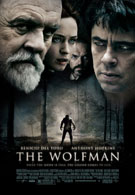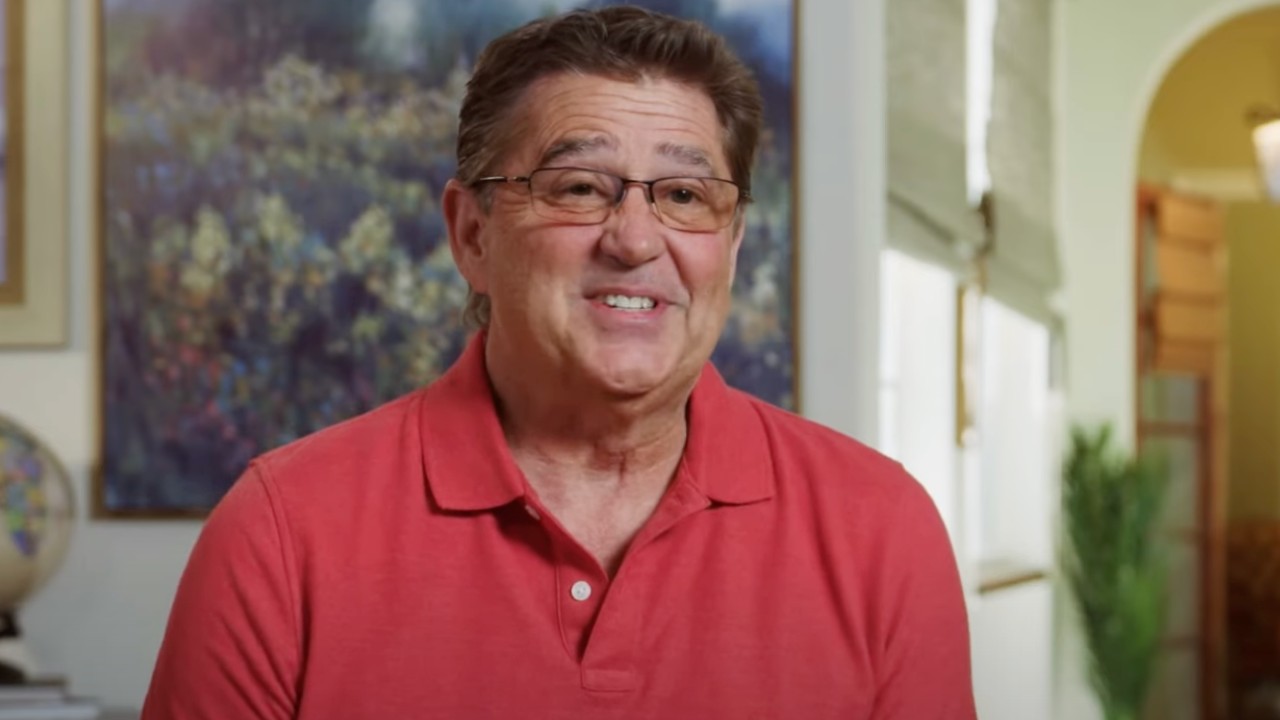In some ways Joe Johnston's The Wolfman didn't have to do all that much to improve on its source material. The original 1941 film was a classic cheapie horror flick, full of stilted dialogue and hammy actors and, yes, a few revolutionary effects shots that are remembered to this day. But with more time to develop character, better technology to play with and a whole lot more money, Johnston had the opportunity to expand on some of the rich psychological territory of the original Wolf Man, and make it look glossier in the process.
But, of course, he didn't do any of that. Behaving like a kid with a giant effects budget and no idea how to use it, Johnston gives us The Wolfman as a rambling, pseudo-Freudian house of horrors, with lots of things to jump out of us and look creepy but virtually nothing that's truly scary. Featuring a bewildering performance from Benicio del Toro, who appears to be faking his American accent, and Anthony Hopkins swanning around a dilapidated mansion in tiger skins, The Wolfman is a strange but ultimately boring mess.
Jumping off from the same basic starting point as the original film, The Wolfman finds del Toro as Lawrence Talbot, the prodigal son of a wealthy family who returns home when his brother Ben is found dead, attacked by a strange beast. Dad (Hopkins) seems not all that interested in his living son, and indeed treated him pretty miserably as demonstrated in childhood flashbacks, but Ben's fiancee Gwen (Emily Blunt) supports Lawrence's mission to figure out what happened to his brother. The hunt leads to a gypsy camp that is attacked late at night by a similar seeming strange beast; Lawrence is bitten in the ensuing struggle, and before you know it, he's starting to feel a little odd come the full moon.
When the movie is titled The Wolfman, there's no real need to build the audience up to the reveal of the main character in monstrous form, but we seemingly spend forever waiting for Lawrence to finally stretch those claws. The effects that come with the transformation work pretty well, but Johnston seems unsure what to do with the monster once he has him. The wolfman spills buckets of blood and sometimes swipes some heads clean off, but none of the kills feel particularly satisfying or fun. The added problem is that the wolfman is a monster without motive-- he seemingly kills anyone in his path, for no reason beyond bloodlust. A killing machine monster is fine as a foil to the main character, but when he's also the hero, the boredom sets in quickly.
Perhaps because he realized the wolfman's rampages were too few and far between, not to mention poorly shot, Johnston tosses in a whole potpourri of scary moments-- whispering topiaries, spooky children, hallucinatory monsters and crazy-eyed gypsies, to name very few. It all serves to make Wolfman feel even more scattered, as if the intent was to use the fairly simple story as a coatrack on which to hang whatever horror cliche suited Johnston at the time. Without a decent performance in the bunch to anchor the film (Blunt and Hugo Weaving both do fine in very limited roles), the movie careens wildly past one gothic setting after another before coming to a fiery, ridiculous end. It's precisely our modern equivalent of the 40s shlock horror, which in a way makes it a perfect tribute to the original film. But back then they spent much less money to make something far less forgettable.
Staff Writer at CinemaBlend












